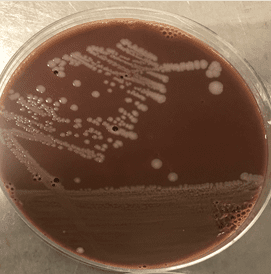
Get A Testing Quote
Haemophilus influenzae
STRUCTURE AND PHYSIOLOGY
Haemophilus influenzae is a Gram-negative, coccobacillary (intermediate shape between cocci and bacilli), facultative anaerobic pathogenic bacterium. H. influenzae is capnophilic, meaning it thrives in environments with high levels of carbon dioxide.
TRANSMISSION AND DISEASE
While H. influenzae was believed to cause of influenza until 1933, this species of bacteria is best known for causing bacterial meningitis. It is also responsible for infections of the respiratory tract (e.g. pneumonia, chronic obstructive pulmonary disease), throat (e.g. epiglottitis), eye, bloodstream, skin, and joints. Vaccines for H. influenzae Type B are available and commonly administered via a pentavalent vaccine in combination with vaccines against diphtheria, tetanus, pertussis, and hepatitis B.
DISINFECTION
H. influenzae is typically treated with antibiotics such as cefotaxime, ceftriaxone, ampicillin, and sulbactam, but it is resistant to penicillin.
NOTES
Haemophilus influenzae is referenced as one of the required microorganisms on the FDA’s 2016 Consumer Antiseptic Rub proposed rule (81 FR 42912 at 42921).
REFERENCE(S)
Kuhnert, P; Christensen, H, eds. (2008). Pasteurellaceae: Biology, Genomics and Molecular Aspects. Caister Academic Press. ISBN 978-1-904455-34-9.
” Haemophilus influenzae Disease (Including Hib)”. Centers for Disease Control and Prevention (CDC). 2019-01-24.
Chang CM; Lauderdale TL; Lee HC; et al. (August 2010). “Colonisation of fluoroquinolone-resistant Haemophilus influenzae among nursing home residents in southern Taiwan”. J. Hosp. Infect. 75 (4): 304–8. doi:10.1016/j.jhin.2009.12.020. PMID 20356651
Share

